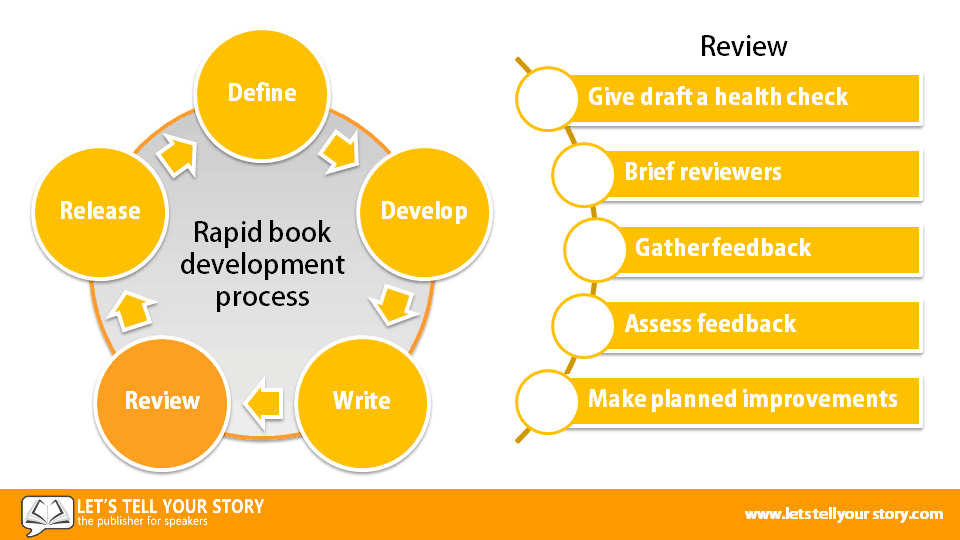
Give your draft a health check
At this stage, you will give your draft health check.
It should be in reasonable shape already. However, even if you have been fixing minor issues at the end of each writing session or end of each chapter, a second check still makes sense.
Look out for simple things.
For example, make sure you have expanded on all your bullet points. You can sometimes overlook some of the lower subheadings because the heading text style will be a similar size to normal paragraph text. It doesn’t stand out as much as a main heading.
Also, check you picked up all the drafting issues, just in case you missed any when you were doing your interim checks.
Your draft manuscript doesn’t need to be perfect. It doesn’t need an exhaustive proofread. A quick review with your spellchecker tool will do.
There might be some minor formatting issues. Don’t worry, it’s not a deal breaker at this stage. It will be picked up later.
Just make sure your draft looks like it has had some checking before you sent it to your reviewers. This shows you respect their time.
If the draft you send them is riddled with simple mistakes, you will
- annoy them
- lose their vital support for your book project
If you look like you don’t care about the quality of your information, why should they?
Brief reviewers
Make sure you tell your reviewers you want high-level feedback on the book concept overall.
To get the most out of the review process, I recommend you give each reviewer a simple form to complete. This means you have more control over the feedback you receive and its structure.
Gather feedback
Ask them to give opinions on your book’s content, specifically
- the overall sequence and scope
- the clarity of your explanations
- the quality of the supporting resources, for example quizzes, forms and templates
- anything that needs removing
- anything that needs reworking
- anything that needs adding
If you don’t brief them about what you want, you’ll find you simply get proofreading feedback. Unfortunately, this won’t highlight any weaknesses in your book’s structure that undermine its ability to meet readers’ needs.
As well as spotting weaknesses, ask them to highlight anything they particularly liked.
This is good source material for your book promotion strategy. For example, you can add glowing reviewing quotes to your press pack – especially when they are from well-respected people within your industry.
It’s also a brilliant confidence booster reading compliments about your book. If you’re worried about being judged harshly, once you’re your ideas are out in public for all to see, some encouraging words at this stage are very helpful.
Assess feedback
Once all your reviewers have given their feedback, gather the responses and look for common patterns.
Analyse it for common complaints
- everyone felt the diagram annotation text was small and fuzzy
- everyone felt the book title was ambiguous and didn’t match the book content they read
These are red flags and they need fixing.
If one person spots something and no one else does, this means one of two things.
The first thing is that the person is very astute and spotted a fundamental problem that nobody else appreciated – not even you! In which case, fix it!
Alternatively, that comment might just be personal opinion.
I’ll give you an example. This feedback is like saying, “I don’t like coffee. I prefer to drink tea. Take out the coffee references.” It doesn’t mean there’s no value in a cup of coffee, just because one person doesn’t like it. It’s merely personal preference. Plenty of other people enjoy coffee, so it’s OK to leave it in.
Make planned improvements
Make sure any changes will lead to real improvements. Create a list that explains
- what the problem is
- where it happened in the book
- how you will fix it
If you’re not sure how to fix a problem, look at some competitor books for ideas and suggest alternatives for your reviewers to consider.
Systematically work your way through the list. Resolve each issue and mark it as complete. That way you can make sure your book is in great shape to take it into the next stage, release.
See you on the next lesson.

